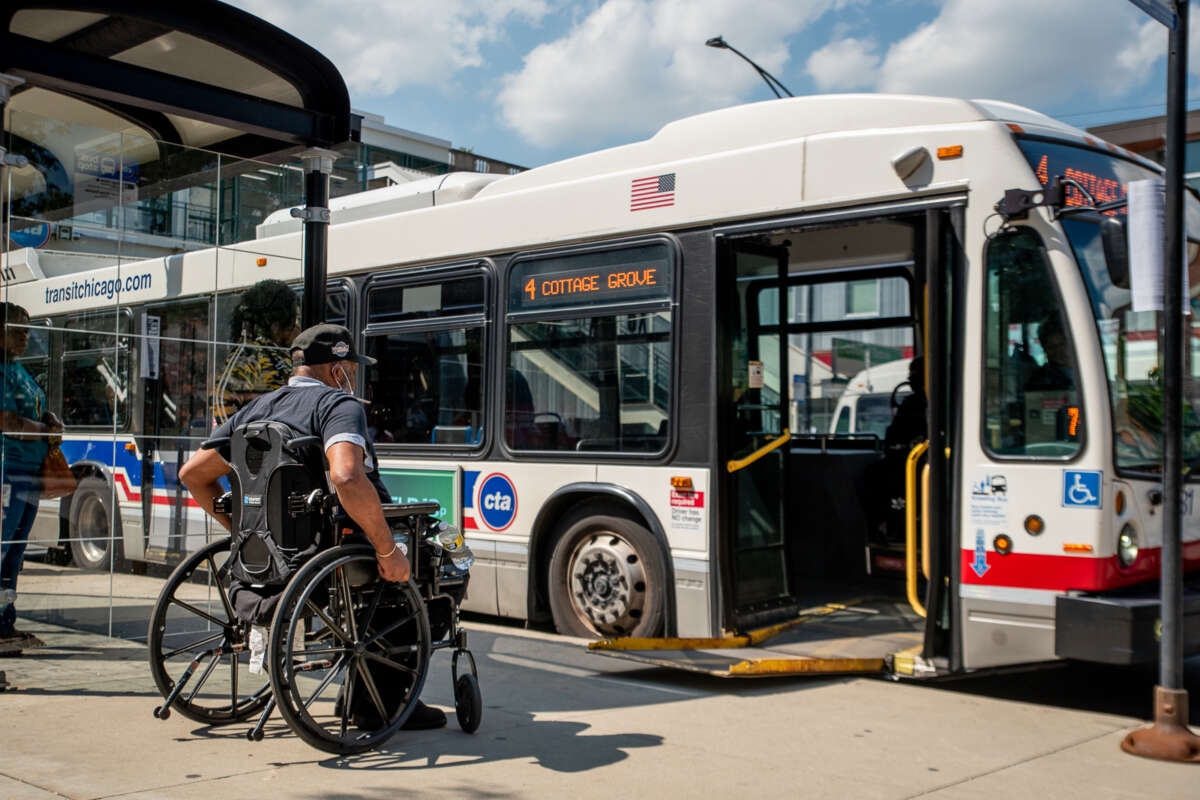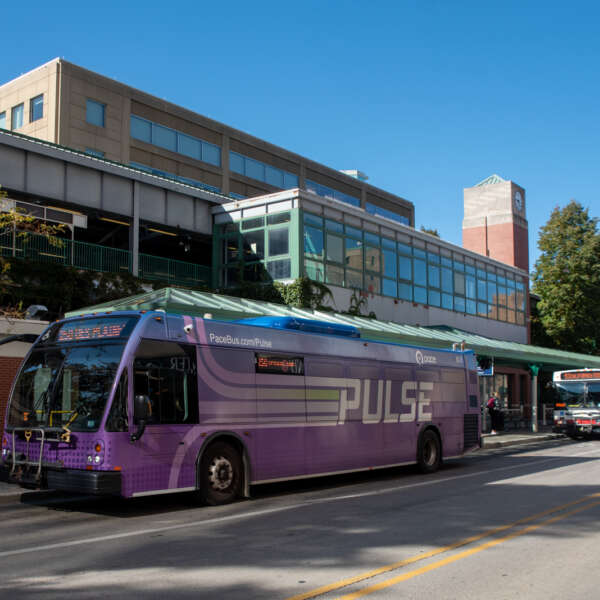Making Chicago’s transit system accessible for all
April 17, 2023
April 17, 2023

This post is one in a series exploring the Agenda for Action and Advocacy in Transit is the Answer, the RTA’s new regional transit strategic plan. Together with our partners, working toward the items on this list will move us closer to the plan’s vision of a public transportation system that is safe, reliable, and accessible that connects people to opportunity, advances equity and combats climate change.
The RTA is committed to helping build a transit system that is accessible for all riders. While all Pace and CTA vehicles are fully accessible and all Metra trains include at least one accessible train car, many rail stations lack elevators and other essential features. The Service Boards are making progress in updating station facilities and other elements of the system every year to reach the region’s goal of 100 percent accessibility.
Every time investments are made in projects like station elevators and ramps, the system gets closer to the goal of universal mobility. This concept recognizes that the benefits from accessibility improvements flow to all users, not just those with disabilities. Removing barriers for people with disabilities improves the transit experience for all. For instance, adding accessibility features makes it easier for families with strollers or grocery carts to use transit along with those in wheelchairs. Currently, approximately 76 percent of stations on the Metra system and 70 percent of stations on the CTA rail system are fully accessible. More funding and service innovations are needed to remove barriers and improve the transit experience for everyone. Recent projects advancing these goals include:
Transit is the Answer renews the RTA and Service Boards’ commitment to a transit system that works better for everyone through its Action Agenda. Stakeholder working groups recommended establishing a dedicated funding source for capital projects addressing ADA improvements. In the near term, the RTA will lead the development of a regional accessibility improvements plan that builds on existing Service Board plans. This new comprehensive plan will provide a full catalog of capital projects that prioritize investment and identify funding sources to achieve full system accessibility.
Integrating accessibility considerations into regular planning processes can be just as important as dedicated programs and funding. During development of the strategic plan, stakeholders and the public had opportunities to weigh in on the capital priorities for the region. The Priority Projects Technical Working Group, made up of experts from CTA, Metra, Pace, and the Chicago Metropolitan Agency for Planning (CMAP), considered this input and identified 12 new themes for evaluating capital projects as they are added to the regional program in future budgeting processes. Accessibility for people with disabilities was included as one of the agreed upon evaluation themes, and performance metrics will be developed to ensure that accessibility is prioritized in the capital program moving forward.
With more resources, the agencies could advance accessibility improvements more quickly. Local municipalities would also benefit from additional regional, state, and federal funding to help them invest in accessible sidewalks, crosswalks, and other infrastructure improvements around their stations, which was a key recommendation of the strategic plan’s working groups. CMAP has launched a program dedicated to advancing ADA transition planning with local municipalities to help them achieve compliance and ensure that public facilities are accessible to all. Linking accessible communities with accessible transit maximizes its value and ensures that people with disabilities have equal access to the opportunities transit provides.
Transit is the Answer’s successful development is due in no small part to the broad coalition of stakeholders who contributed to it. To implement the plan and achieve its goals, we need to continue to engage all those who have a stake in the transit system’s future. Please join our coalition to learn more about how transit is the answer to our region’s accessibility challenges.
Subscribe to our Newsletter
Related Articles
 2024 recap: RTA brings 8 Transit Station Activations throughout region as part of pilot program
2024 recap: RTA brings 8 Transit Station Activations throughout region as part of pilot program
In spring 2024, RTA announced more than $120,000 in funding for eight Transit Station Activation projects as part of a pilot program with the goal of improvi...
January 9, 2025 Village of La Grange adopts comprehensive plan calling for more density near transit
Village of La Grange adopts comprehensive plan calling for more density near transit
In November, the Village of La Grange voted to adopt La Grange Forward, a comprehensive plan developed as part of the RTA’s Community Planning program. The d...
January 7, 2025 Transit Station Activation on West Side brings historic home movies from the neighborhood to life
Transit Station Activation on West Side brings historic home movies from the neighborhood to life
In May, the RTA announced more than $120,000 in funding for eight Transit Station Activation pilot projects near CTA, Metra, and Pace stations and stops. The...
December 19, 2024 Voters overwhelmingly support transit nationally this election cycle
Voters overwhelmingly support transit nationally this election cycle
Voters across the nation were not only asked to choose their elected representatives this November, but in many states the future of their local transit syst...
November 21, 2024 State hearings show broad support for funding transit and increasing service across region
State hearings show broad support for funding transit and increasing service across region
Lawmakers, local leaders, and transit stakeholders from throughout the region recognize the extraordinary value of the transit system and the need for sustai...
November 21, 2024 Help shape the future of suburban transit: Take the Pace ReVision survey or attend an open house
Help shape the future of suburban transit: Take the Pace ReVision survey or attend an open house
This is a guest blog from Pace on a new initiative that aims to adapt transit service to meet the changing needs of riders—a key action item in the RTA’s reg...
November 18, 2024